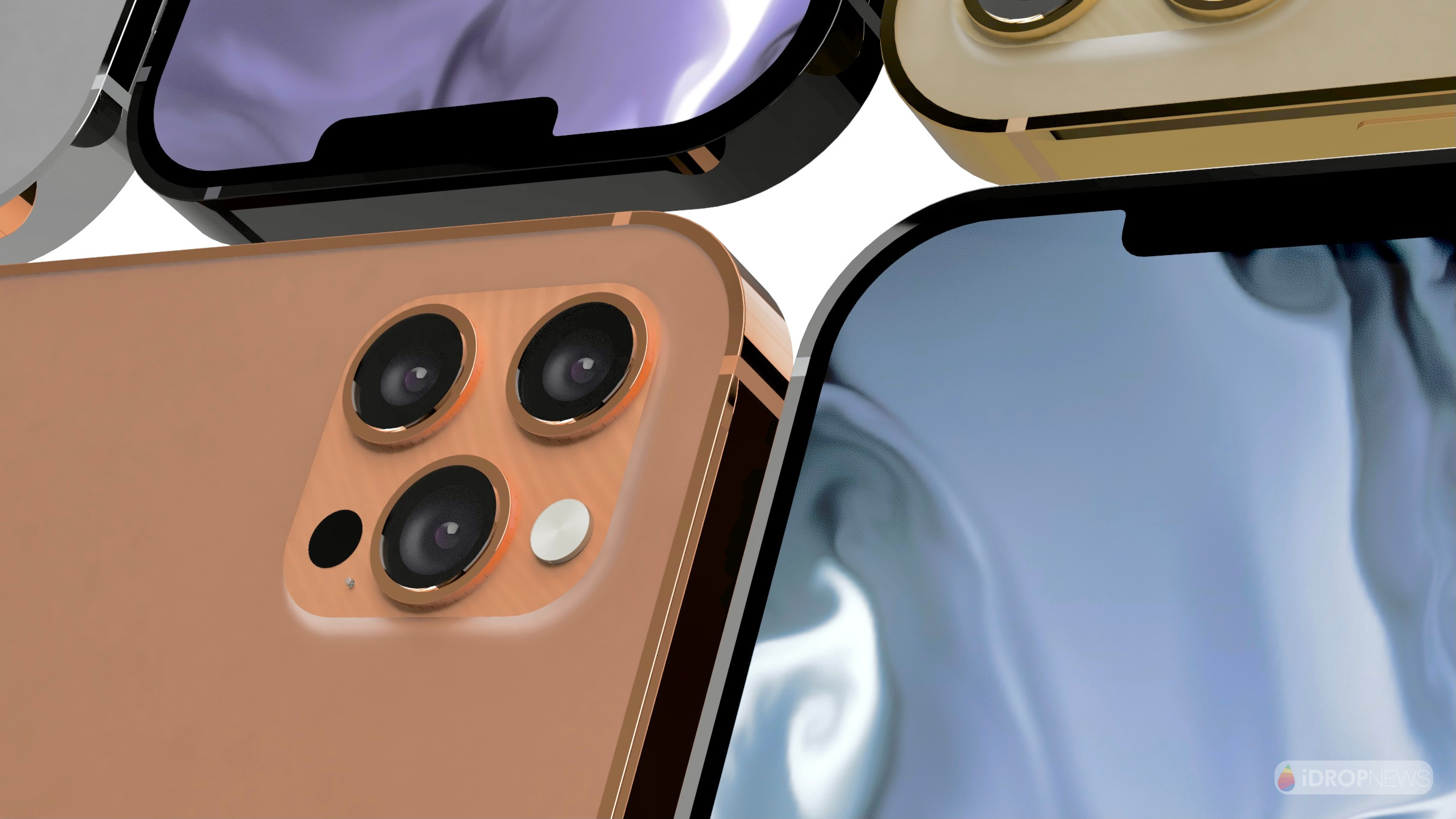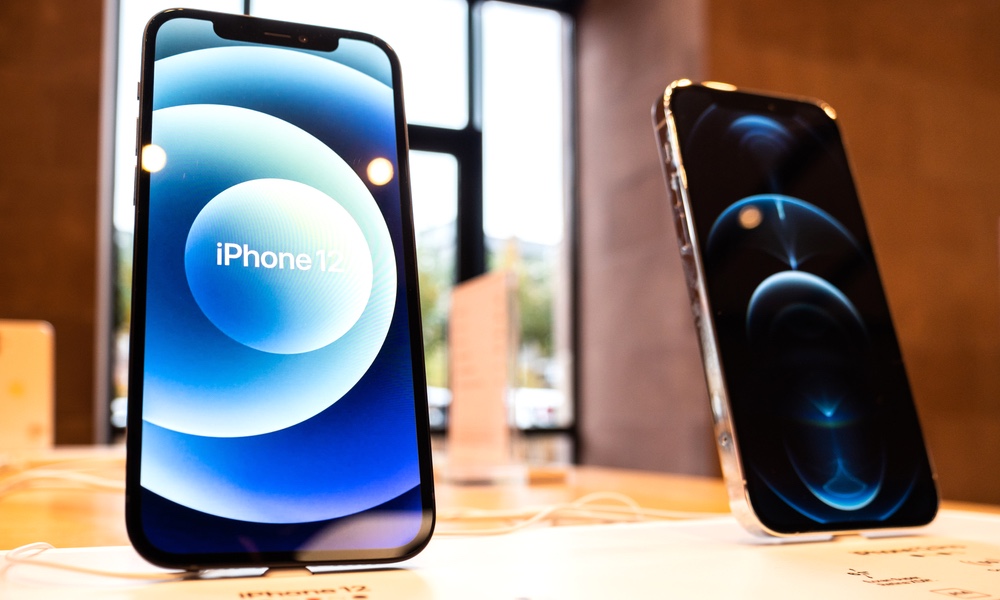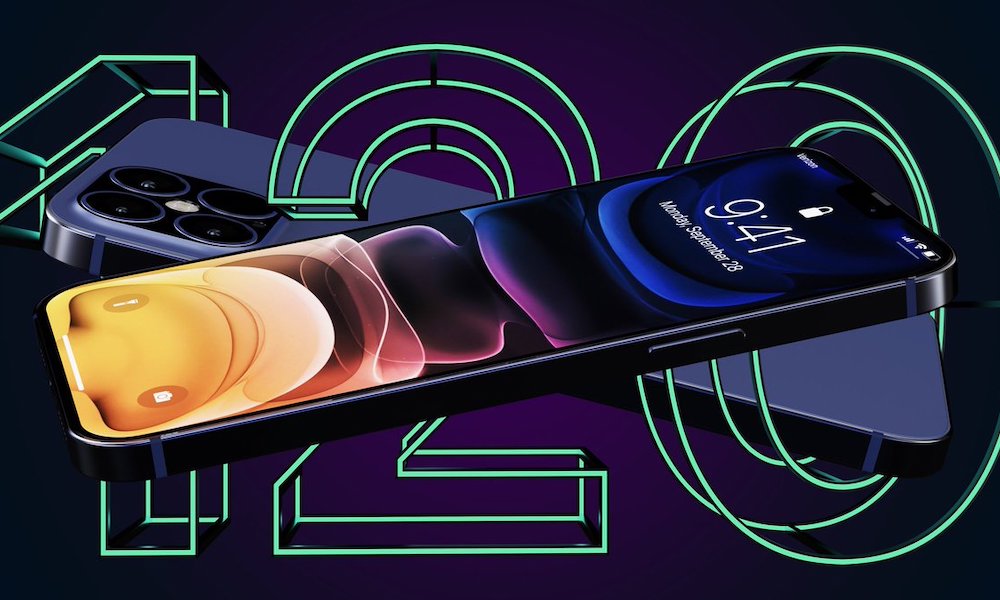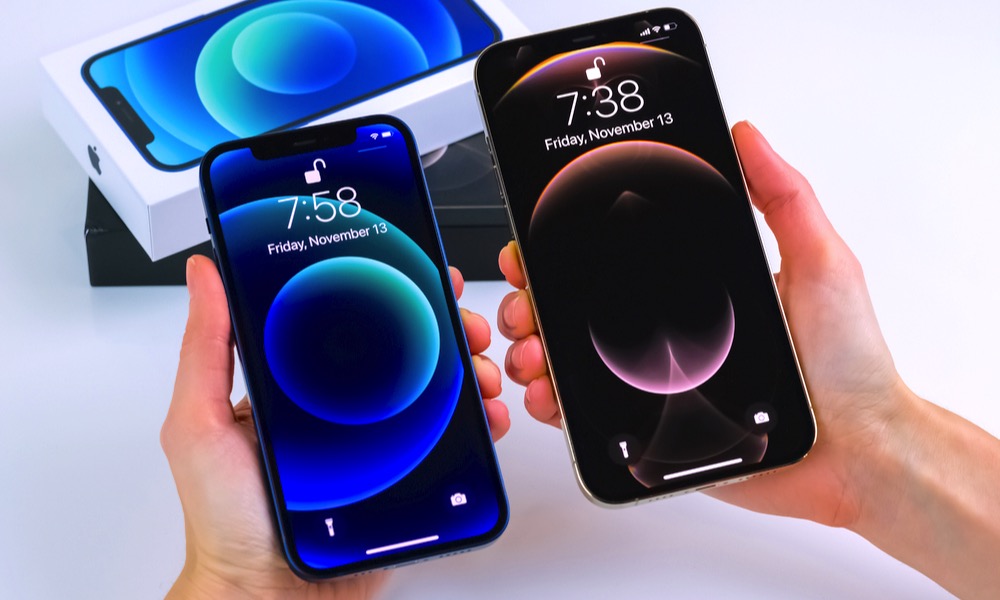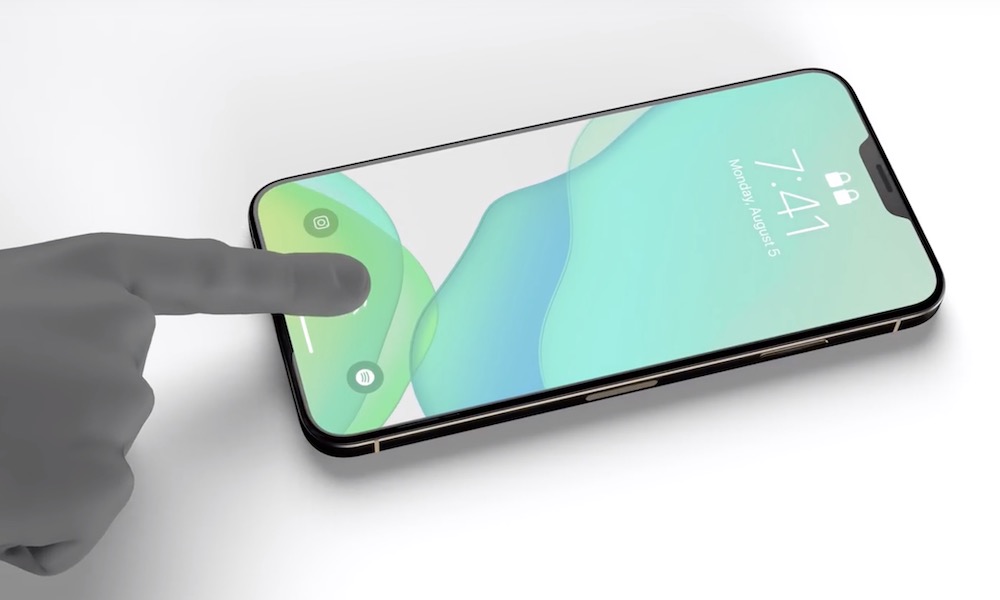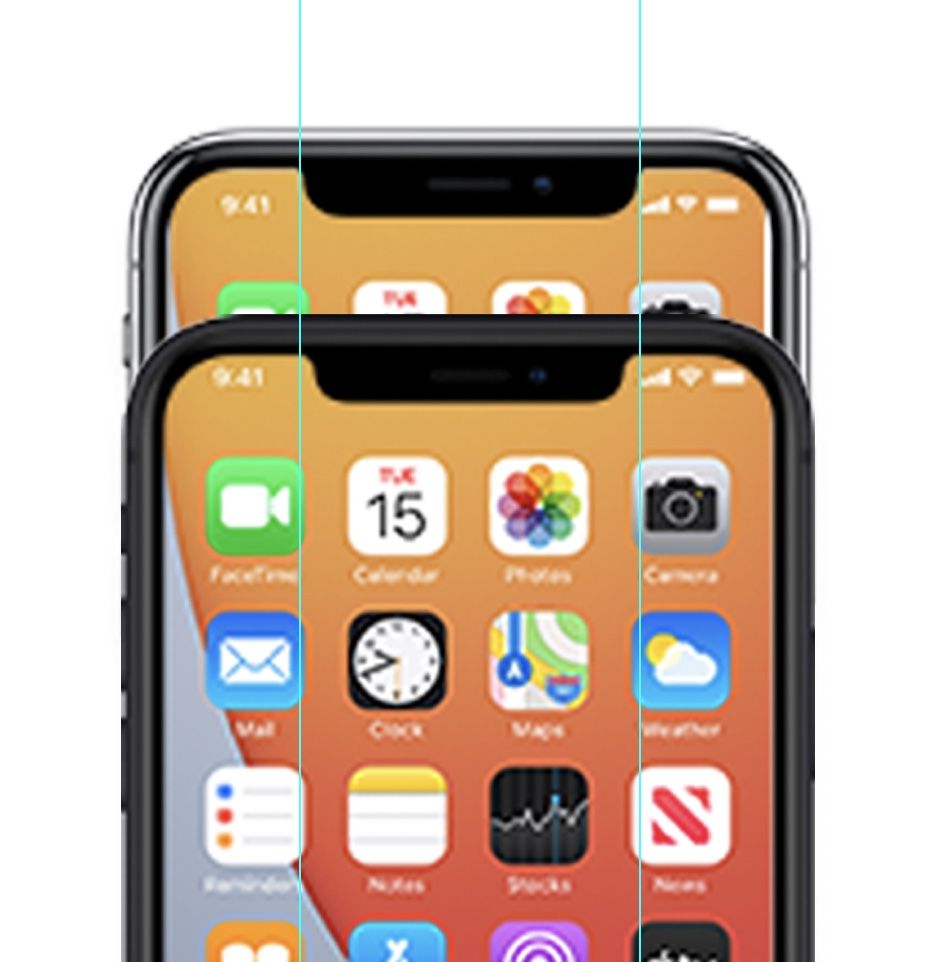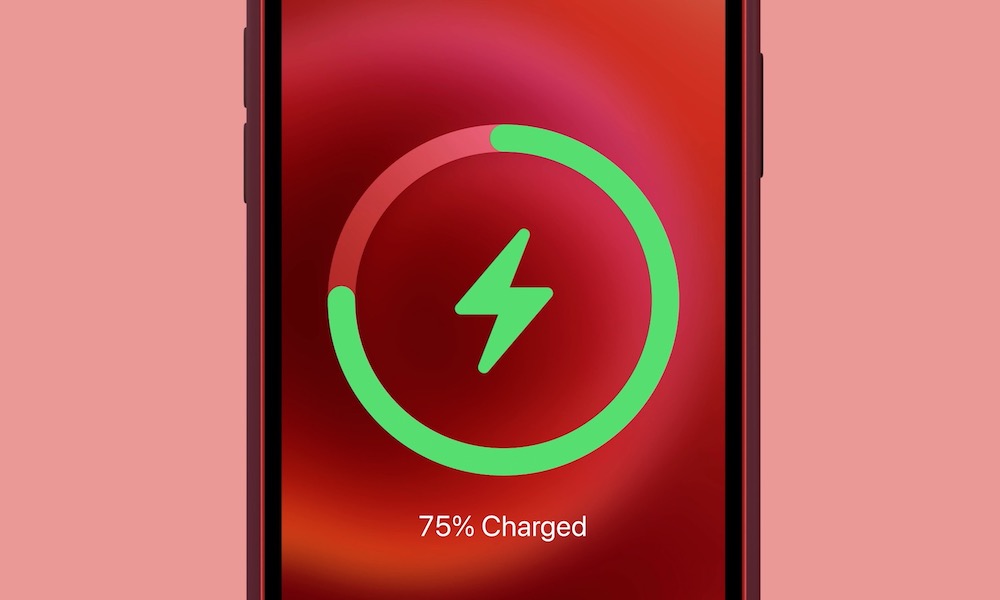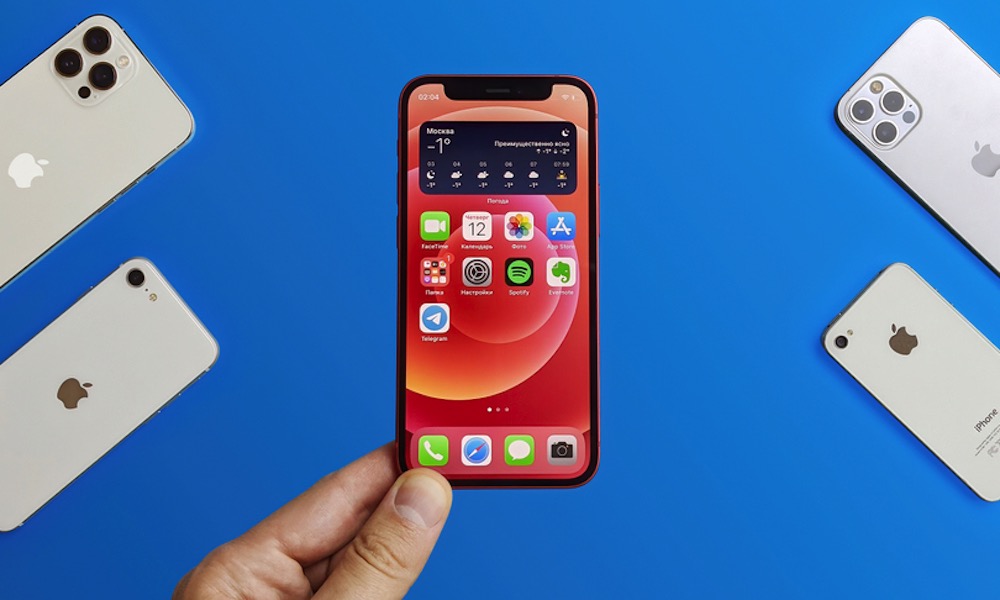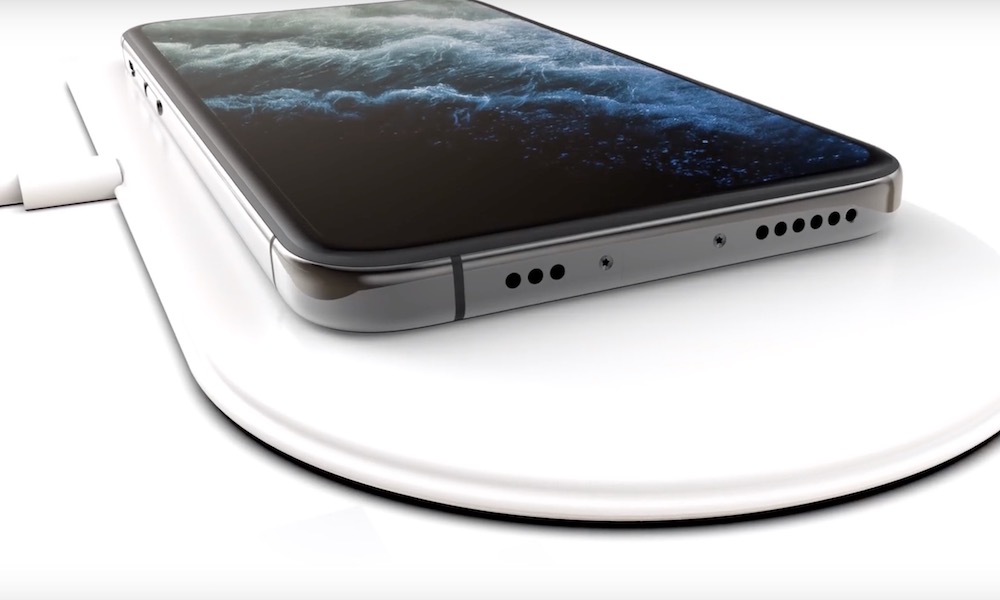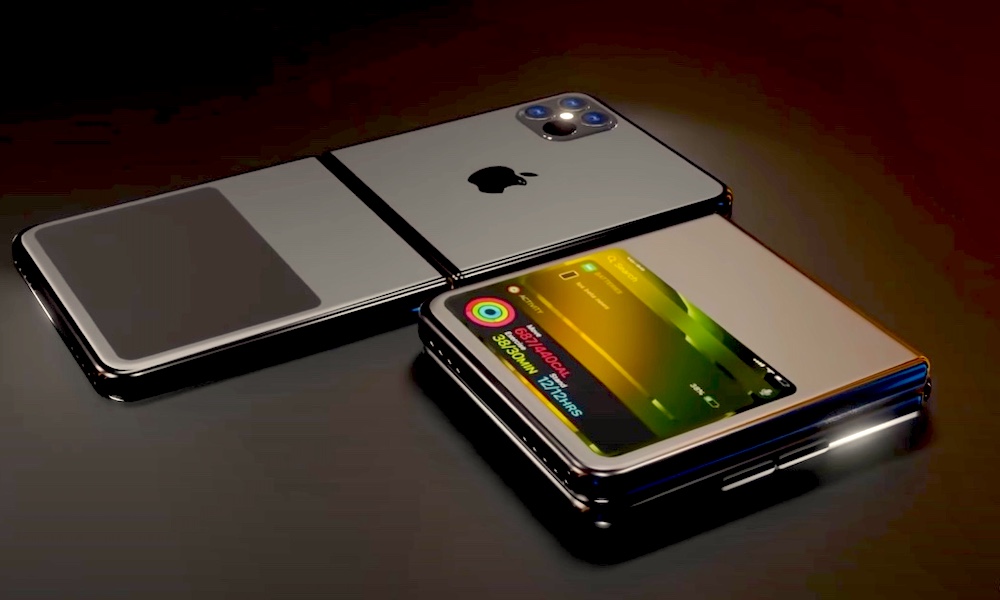Here Are 13 Exciting Things We Know About the ‘iPhone 13’
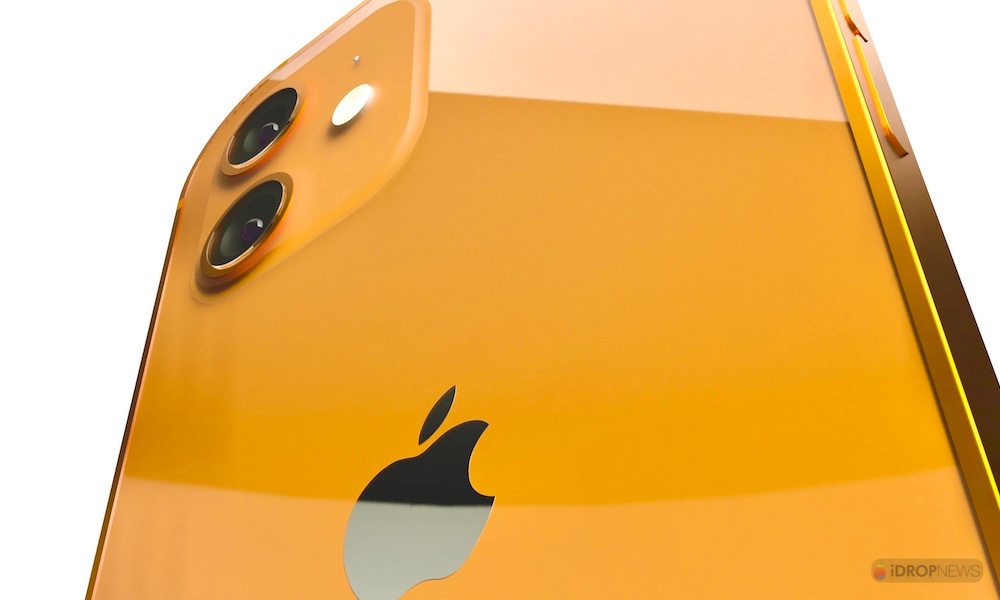 Credit: iDrop News / Wilson Nicklaus
Credit: iDrop News / Wilson NicklausBy now there’s absolutely no doubt that Apple will release yet another new iPhone model later this year — you can pretty much mark your calendar by Apple’s annual iPhone release events — but what’s obviously much less clear is what we can expect from Apple’s newest iPhone model.
After all, each year Apple packs more and more cool technology into its latest iPhones, making us wonder what it could possibly do for an encore, and yet at the same time, the company also manages to surprise us with features that many of us never knew we actually needed.
While last year’s iPhone 12 ushered in a whole new era for Apple’s smartphones with the advent of 5G technology, that doesn’t mean that there’s not going to be some pretty exciting stuff packed into this year’s model, and now that we’re well into 2021, some of those details are beginning to come into focus. Read on for 13 things that we’re expecting to come to Apple’s 2021 iPhone lineup.
It May Not Be the ‘iPhone 13’
Firstly, the jury is still out on what Apple will actually call this year’s iPhone model; it’s something we rarely know for sure until Apple takes the stage and formally announces the new lineup.
Last year the iPhone 12 name was pretty much locked in from the start, as the addition of 5G and a whole new design meant that it definitely needed a major numerical bump, and in a rare development we actually saw some leaked photos of product labels that gave away the names a few weeks before the launch. Unlike previous naming leaks from third-party accessory makers, who are usually as much in the dark as anybody else, these were purportedly of Apple’s own silicone cases.
This year, however, the name is far less of a certainty, and while everybody is calling it the “iPhone 13” for the sake of having to call it something, last month Bloomberg’s Mark Gurman, who generally has the inside track on such things, predicted that it might be the iPhone 12S instead.
While Apple skipped the iPhone 11S last year in its rush to 5G technology, that’s not necessarily a sign that the company has given up on “S models” entirely, as the lack of these have been the exception, rather than the rule — other than the aforementioned big iPhone 11 to iPhone 12 transition, the only other time we skipped an “S” model was with the iPhone 8, which really was for all intents and purposes an “iPhone 7S” from a design and features perspective, but it was also going up against Apple’s sleek new iPhone X at the time, so it needed to be positioned as a bigger upgrade to the traditional iPhone design.
So if the rumours of a relatively minor redesign are true — and we have no reason to believe they aren’t, as Apple has always stuck with its designs for a minimum of two years — then this year’s iPhone would clearly fit the classic “S model” mold, and become the “iPhone 12S.”
It’s Coming On Time This Year
Last year was the first time in a decade that Apple had failed to release a new iPhone model in September. In fact, the only other iPhone model to ever see an October release was the iPhone 4S back in 2010, which was the first iPhone to ever be released in the fall season — the original iPhone was announced at Macworld in 2007, and the iPhone 3G, iPhone 3GS, and iPhone 4 all made their debut at Apple’s June WWDC event.
However, the October launch date for last year’s iPhone 12 was never intended to be the new normal — it was purely a result of supply chain problems brought on by the COVID-19 pandemic, and even though we’re still arguably in the thick of it, Apple has also had a full year to address those problems and bring things back on track, and reputable analysts are predicting that we’ll be back to a September launch this year.
In fact, not only is Apple expected to get back on track with its iPhone launch, but it also looks like the entire lineup will be available at the same time, rather than the staggered release of the iPhone 12 models last year, which was almost certainly another delay caused by the pandemic.
A Faster ‘ProMotion’ Display
If there’s one single feature that we’d put money on for this year’s iPhone, it’s the move to newer and faster 120Hz LTPO display technology — at least when it comes to the iPhone Pro models.
After all, we heard more than one reliable report last year that this was supposed to come to the iPhone 12 Pro, from supply chain reports to actual leaked images of settings found in iOS 14. By all reports, the main reason that Apple had to quash these plans wasn’t even due to the lack of the displays themselves, but rather an inability to get enough driver chips to run the displays — a problem that it will have undoubtedly solved by this fall.
While this would be similar in principle to the “ProMotion” display technology that’s been a staple of all of Apple’s iPad Pro models since 2015, it wouldn’t be quite the same, since the iPad Pro 120Hz displays are entirely LCD-based, while the iPhone has moved exclusively to OLED. This is where the LTPO — short for low-temperature polycrystalline oxide — technology comes into play.
It’s unclear whether Apple will bring this to the entire iPhone lineup, but we’re betting that it will only be the Pro models, as it was allegedly going to be last year with the iPhone 12; 2020 actually marked the first time that all of Apple’s iPhones featured the same display technology, after the iPhone 12 moved from the LCD-based Liquid Retina found on its predecessors into the land of OLED, but we’re pretty confident that’s not what Apple originally intended.
An Always-On Display
While the LTPO displays that are almost certainly coming to this year’s iPhone Pro are necessary for supporting “ProMotion” refresh rates on OLED screens, they also bring another very significant benefit with them: much lower power consumption.
The magic of LTPO is found in the ability to reduce the screen refresh rates down to minimal levels, to the point where they’re basically sipping power. OLED screens are very efficient at maintaining static images — it’s updating the screen that consumes the most power.
This is the same technology that’s used for the Always-On Display on the Apple Watch Series 5 and Series 6, and anybody who has used one of those models will note that the display only updates about once per minute — on an analog watch face, the second hand disappears entirely when you lower your wrist.
So while an Always-On Display would be a cool addition to an iPhone, it’s safe to say that it will have the same limitations — fine for displaying the date and time and notifications, but not for animating your Lock Screen in real-time. That said, it looks like Apple’s MagSafe Leather Sleeve was pretty much made for this exact purpose, with a window that shows the time when the iPhone is inserted in the sleeve. We’re almost certain this was planned before Apple realized that it wouldn’t be able to include the LTPO displays in the iPhone 12, and Apple simply decided to release it anyway.
In-Display Touch ID
We’ve been hearing rumours for years that Apple has been hard at work on in-display Touch ID technology, from the days even before Face ID came along in the 2017 iPhone X, so it’s easy to shrug off yet another report that it’s coming to this year’s iPhone, except for the fact that this time we’re hearing it from much more reliable sources.
Specifically, in the same report where he predicted the “iPhone 12S” name, Bloomberg’s Mark Gurman also added that in-display Touch ID would be the marquee feature of this year’s iPhone model, and Gurman’s information was also backed up by the Wall Street Journal’s Joanna Stern.
If the “iPhone 12S” name is true, this would also make for an interesting parallel to the iPhone 5S, which was not only the model where Touch ID first debuted, but also the last one to feature the flat-edged design now resurrected by the iPhone 12.
Both Gurman and Stern also both emphasized that in-display Touch ID will complement Face ID, contrary to other rumours that have suggested Apple is developing it solely to replace Face ID for lower-cost iPhone models. However, Apple has already demonstrated a much better way to do that with last year’s 11-inch iPad Air, which puts the Touch ID sensor in the side button, and several reports suggest that the same method will be used with the next iPhone SE.
In the case of Apple’s flagship iPhone lineup, however, the in-display Touch ID would be designed to allow an alternative way to unlock the iPhone in environments where Face ID isn’t practical, such as when wearing a mask. Even though Apple has already come up with a clever workaround for this scenario, there’s almost no arguing that offering a Touch ID sensor would be far easier, more secure, and make rapid iPhone unlocking accessible to more users.
A Smaller Notch
Ever since Apple debuted the iPhone X back in 2017 with its revolutionary TrueDepth camera system, there’s been no shortage of rumours and speculation about ways in which Apple might be working to reduce the size of the notch, or even eliminate it entirely.
However, even though the notch seemed very unsightly at first, most iPhone users quickly became accustomed to it, and as other smartphone makers began blatantly copying it, smartphones with edge-to-edge displays marred by a big notch became the norm.
In fact, despite rumours that the iPhone 12 mini would be getting a smaller notch, it turns out that Apple actually slightly increased notch sizes across the board with the iPhone 12 lineup.
So, when we first heard rumours that this year’s iPhone would finally get a smaller notch, we were pretty skeptical until another report explained how Apple could accomplish this by making some significant changes to how the TrueDepth camera system is laid out.
While we’re still not sure that simply reducing the notch is a huge priority for Apple, it may simply be a side effect of redesigning the front camera system for other reasons. Still, we’re hopeful that what Apple is actually focusing on is getting rid of the notch entirely.
Better Cameras
You can pretty much bank on the fact that each year’s iPhone release will bring noticeable camera improvements. After all, it’s been Apple’s state mission since at least 2016 to make the iPhone not just the best smartphone on the planet, but also the best camera too.
While we heard a slightly crazy report last spring that the new iPhone could gain a four-camera system, with the main shooter getting a bump to 64MP, and the telephoto and ultra-wide going to 40MP, we took that with a grain of salt even back then — something that even the original leaker recommended — and recent reports have suggested that we’ll see more modest, iterative improvements.
This would be keeping in line with what Apple has already been doing each year. The iPhone 11 saw the biggest camera bump (pun only slightly intended) that we’ve seen in years when it moved to a dual-camera system for the iPhone 11 and a triple-lens system for the iPhone 11 Pro. The iPhone 12 kept the same basic camera systems across the lineup, while adding better lenses and wider apertures, and giving the iPhone 12 Pro a new LiDAR Scanner that dramatically improved autofocus speeds and low-light photography. For the first time in Apple’s modern iPhone lineup, the larger iPhone 12 Pro Max also gained even more camera improvements over its smaller sibling.
So, it’s safe to say that we can expect the same sort of thing from this year’s iPhone, with the most notable change being a massive improvement to the Ultra-Wide camera, taking it up to a much wider aperture, six-element lens, and autofocus, all of which would bring it more in line with the other cameras — which will also undoubtedly see their own improvements in image quality.
Of course, in these days of machine learning and computational photography, there’s a lot more to the iPhone camera system than just the actual imaging hardware — Apple’s A14 chip brought some significant new improvements on its own last year, and it’s safe to say we can expect the same from the A15 that will undoubtedly form the core of this year’s iPhone.
LiDAR for All
When Apple added a LiDAR Scanner to the iPad Pro last spring it heralded a whole new era in photography, imaging, and augmented reality, and even though its usefulness on the iPad Pro was limited primarily to AR applications, it wasn’t hard to see what it could bring to the iPhone camera system.
So, it was pretty exciting when the LiDAR Scanner came to the iPhone 12 Pro models, but if rumours are true, that distinction may fade away this year, with reports that it could be coming to the entire iPhone lineup.
Of course, this doesn’t mean that the standard iPhone will necessarily gain a three-lens camera system, since even the 2020 iPad Pro packed in the LiDAR Scanner with only two lenses (neither of which are up to the same standards as even the 2019 iPhone 11), but it would power whatever photographic capabilities are already there, while also allowing fans of the lower-cost iPhone models to take advantage of improved augmented reality features (which we suspect would probably be Apple’s primary reason for adding it).
Faster Wi-Fi
Now that Apple has added top-notch 5G technology to its iPhone lineup, it looks like its focus may return to improving the Wi-Fi performance of its iPhone models by adding support for the latest 6GHz Wi-Fi 6E technology.
While Wi-Fi 6E is still in its fairly nascent stages, its use of the 6GHz Wi-Fi spectrum offers potential for significantly faster speeds than mere 802.11ax Wi-Fi 6, which shares the same congested 2.4GHz and 5GHz channels as all the older Wi-Fi standards.
It’s worth keeping in mind, however, that Apple added Wi-Fi 6 support to the iPhone 11 back in late 2019, becoming one of the first smartphone makers to do so, back at a time when that technology was still on the bleeding edge.
While Wi-Fi 6E would represent a fairly minor upgrade for most users right now, it would definitely pave the way for better and faster wireless performance at even lower power levels — especially when dealing with busy Wi-Fi networks.
Better Battery Life
Apple tends to work on making at least some improvements to the battery life of its iPhones each year, but despite reports of lower-power LTPO displays, we wouldn’t expect battery performance to take a huge jump.
Instead, the LTPO technology will almost certainly be used to allow the display to remain on in certain modes without sacrificing battery life, in the same way Apple did with the Apple Watch Series 5, which introduced the first Always On Display in an Apple product while still maintaining the same 18-hour battery life of its predecessor.
That said, Apple seems to be less obsessively focused on ultra-slim iPhones these days, and it’s shown a willingness to pack in bigger batteries even if that comes at the expense of thickness, so there’s little doubt that Apple will have some impressive battery numbers to share when it takes the stage to debut the new iPhones later this year.
The iPhone 13 mini
In our opinion, rumours of the iPhone mini’s demise are being greatly exaggerated. While it’s entirely true that the smaller, 5.4-inch iPhone has not been selling as well as Apple had hoped, we think there are a number of very good reasons for that, ranging from its later release date to the fact that most iPhone owners are on two-year upgrade cycles and really had no idea that a smaller iPhone like this was coming.
So, although some analysts have seen the iPhone 12 mini’s failure to grab more market share as a sign that nobody wants smaller smartphones anymore, that’s far from a foregone conclusion, and we doubt very much that Apple sees it that way either. In the very least, it’s not about to declare the 5.4-inch iPhone a failed experiment until it’s given it at least another year, and possibly even more.
This also lines up with what most reputable analysts have been saying all along, which is that Apple still plans to release the same four-model lineup this fall, by which time we may be pleasantly surprised to see the uptake on the much more pocketable iPhone.
More MagSafe
Apple’s MagSafe ecosystem will no doubt continue to expand even throughout this year, and it’s a safe bet that the system is going to become the new normal for Apple’s iPhone lineup, but in all likelihood, we’ll see even more MagSafe accessories and even new MagSafe capabilities when the next iPhone launches.
We already know that Apple is working on a full-speed 15W MagSafe battery pack, and there have been rumours of a MagSafe cooling case as well, but what’s fascinating is how MagSafe will pave the way for a portless iPhone.
It’s something that reliable sources have been talking about for a while, and while we’re still a bit skeptical that it could happen this year, it doesn’t seem to be entirely out of the realm of possibility. After all, if you have a recent iPhone model and a wireless charger, when’s the last time you plugged anything into the Lightning port?
Will It Be Foldable?
When 2021 began, we were optimistic that it could be the year of the folding iPhone, but while there has been lots of evidence that Apple is actively working on it, most recent reports have suggested that it’s actually still a couple of years away, so we’d say not to bet on it for this year.
That said, it does look like Apple has settled on a design for its first foldable iPhone, and there are even rumours that it could feature a large enough display to justify adding an Apple Pencil, but so far, all of this information seems to be very preliminary at best, and even if Apple is already heading in a specific direction, it could still run into roadblocks that could significantly change things.
So for all intents and purposes, it’s safe to say that this year’s iPhone will feature the same design as the iPhone 12, with all the improvements being made entirely on the inside.

